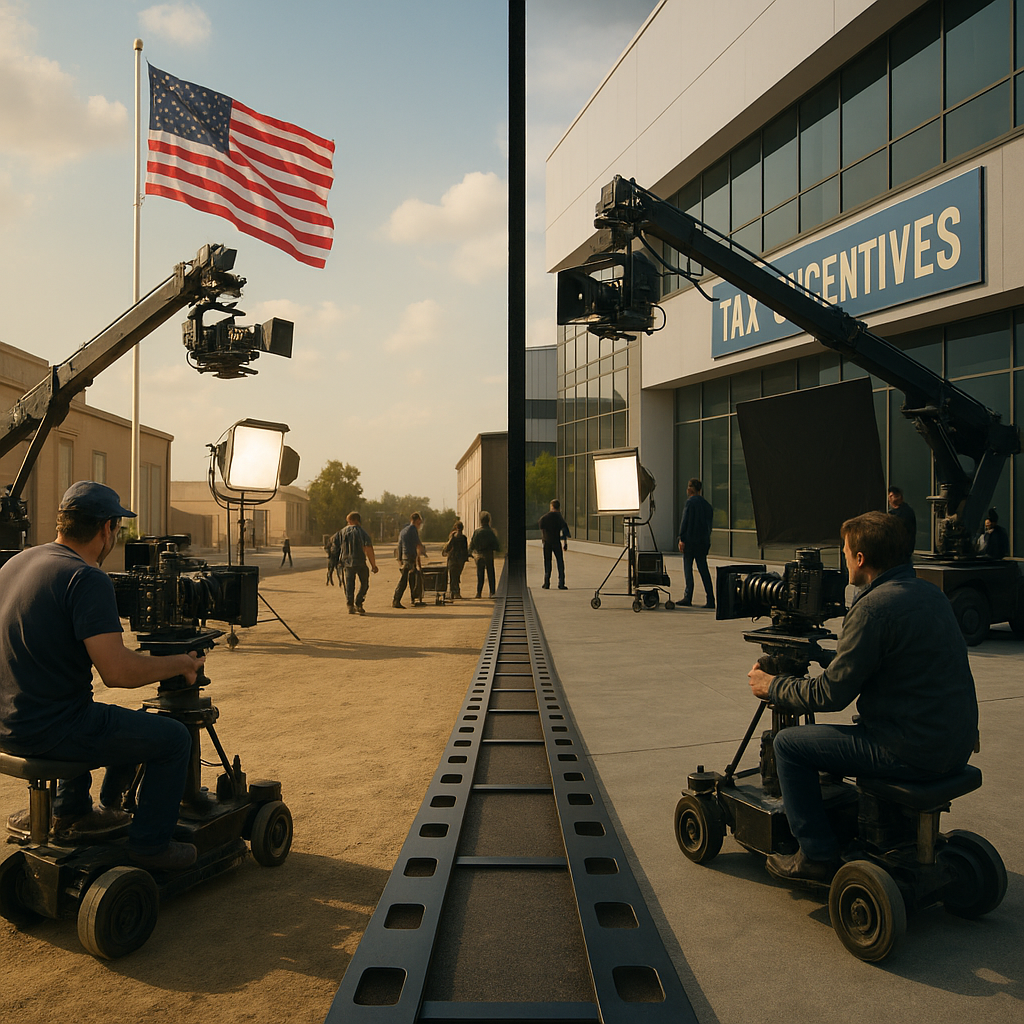
In a move that sent shockwaves through the global film community, former President Donald Trump announced plans to impose a 100% tariff on all foreign-made films if reelected. Declaring on Truth Social, “We want movies made in America, again!” Trump accused other nations of engaging in “economic sabotage” and spreading “cultural propaganda” by luring productions abroad with aggressive tax incentives. But the proposal—while fiery in tone—clashes sharply with the messy realities of modern filmmaking.
At its core, the proposal reflects a nationalist economic strategy: bring jobs, investment, and cultural capital back to U.S. soil. But applying a protectionist trade policy to an industry as globally interconnected as film reveals a fundamental misunderstanding of how movies are made today.
The Illusion of “Made in America”
On paper, a tariff on “foreign-made” films may seem like a straightforward economic shield. In practice, however, determining a film’s nationality is anything but clear. Hollywood has long operated as a globalized industry, with financing, production, talent, and post-production work spread across continents.
Many “American” films are shot in Canada, the UK, or Australia to take advantage of significant tax incentives and lower production costs. For instance, in 2019, nearly 24% of Hollywood studio films had at least one day of filming in the UK, and nearly 20% in Canada. Meanwhile, visual effects might be created in New Zealand, sound mixing in India, and post-production finished in France. A single blockbuster might touch five countries—none of which undermine its “American” identity in the eyes of most audiences.
And the reverse is true as well. A film could be shot in the U.S. using American crews, but if it’s funded, directed, and creatively controlled from abroad, does it still qualify as American?
The Tangle of Classification
There’s currently no official U.S. definition for what constitutes an “American” film. IMDb listings are self-reported by producers, and festivals, awards bodies, and funding agencies each use different, often conflicting criteria. Some consider the location of the primary production company; others use the director’s nationality or the shooting location. Some systems use a points-based approach considering key creative personnel, funding sources, and cultural content.
Trump’s policy implies a binary distinction—foreign vs. domestic—that simply doesn’t hold up. The rise of co-productions, streaming content with global roots, and hybrid financing structures have eroded clear lines of cinematic nationality. Films like Slumdog Millionaire, Gravity, and 12 Years a Slave have all sparked debate over which country gets to claim ownership.
What Would a Tariff Even Protect?
If Trump’s goal is to safeguard the American economy, a tariff may not have the intended effect. Hollywood films are already primarily funded by American capital—but they spend large portions of that money abroad to stretch budgets. In many cases, these foreign shoots still result in profits, cultural exports, and job creation in the U.S.
If the goal is to protect American jobs, then penalizing foreign-made films may inadvertently harm U.S.-based production companies that rely on international collaborations and foreign subsidies. Thousands of Americans—actors, writers, editors, and VFX artists—work on projects filmed overseas.
If the goal is cultural protectionism, then it’s even murkier. Films that feel distinctly “American” to audiences may be made abroad. Conversely, foreign-funded or shot productions may still tell deeply American stories.
The Real Drivers Behind Offshore Filming
Studios don’t shoot abroad out of disloyalty; they do so because other countries offer better deals. Nations like Canada, the UK, New Zealand, and Ireland offer generous rebates—often exceeding 30% of production costs. These savings can total tens of millions of dollars for major productions.
Additionally, countries have invested in top-tier infrastructure. London’s Leavesden Studios, Vancouver Film Studios, and Sydney’s Fox Studios all rival or surpass American counterparts. These locations boast experienced crews, streamlined permitting processes, and—in many cases—more predictable labor and weather conditions.
Even if tariffs discouraged foreign film imports, studios would likely respond by reclassifying or restructuring productions to dodge the penalties, rather than actually reshoring entire productions to the U.S.
A Cultural Cold War?
Trump’s proposal frames foreign films as a form of cultural competition—echoing Cold War-era anxieties about propaganda and influence. But in today’s media ecosystem, cultural exchange flows both ways. American films dominate global screens, and foreign films increasingly gain ground in the U.S. market thanks to streaming platforms and shifting audience tastes.
Rather than punishing international productions, many analysts argue for policies that make the U.S. more competitive: expanding domestic tax incentives, investing in film infrastructure, supporting education and workforce development, and modernizing visa processes for global talent.
Conclusion
Trump’s proposed film tariff may rally his base and revive slogans about bringing jobs home, but it’s a policy out of sync with the global nature of 21st-century filmmaking. The industry no longer fits into neat national categories, and punishing foreign collaborations could do more harm than good to the very system that has long made Hollywood the cultural capital of the world.
Chris Sturges, Business Development Director for
Suspiciously Convenient Productions Inc
Contact: chris@suspiciouslyconvenient.com
Tags: #Made In America #BC Film Industry #Film Tariffs
#Hollywood Global #Cultural Protectionism #Trump Tariff Threat

